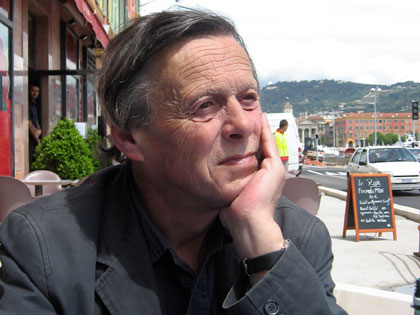By Clinton Heylin. Constable, £20.00 sterling.
Bob Dylan has always attracted extreme admirers, but among the goodly number of daft books written about him none was dafter than Dylan’s Visions of Sin (2004), in which eminent literary critic Christopher Ricks chose to regard the songs as lyrics on a page, divorced both from their melodies and their creator’s performances of them, and then extrapolated extraordinary meanings from these tuneless lyrics. As learned commentators view in Homer more than Homer knew…
Clinton Heylin, who’s already written an engrossing if overly starstruck biography of the singer-songwriter, is another Dylan fanatic – “the most remarkable artist of his era,” he sweepingly declares at the outset of this new book – and though he’s approving of Ricks, he’s withering about most of the other “chronically misinformed” rivals in print. Michael Gray, for instance, is a “so-called expert” whose much-praised 2006 Bob Dylan Encyclopedia is “an almanac of prejudices”.
You’ll find prejudices galore in Revolution in the Air, which takes Dylan’s first 300 songs in chronological order of their composition – beginning with the now lost Song to Brigit in 1957 and ending with the 1973 Wedding Song – and details how each of them was written and first performed and/or recorded.
The book’s title echoes that of Ian MacDonald’s 1994 Revolution in the Head, which took the same approach to the 186 songs recorded by The Beatles, though it has to be said that MacDonald’s book is far better written and also less slavishly uncritical – he has no qualms about deriding some of Lennon and McCartney’s creative misfires (McCartney’s Maxwell’s Silver Hammer, for instance, is dismissed as “sniggering nonsense”).
And while MacDonald keeps the generally interested reader in mind by rigorously omitting anything that’s merely of fanzine interest, many of Heylin’s revelations, observations and asides seem merely aimed at Dylan obsessives like himself.
Yet there’s much here that will be engrossing to those of us who’ve been following Dylan’s career from the beginning, not least his accounts of how the young singer-songwriter purloined melodies whenever it suited him – With God on Our Side borrowed, note for note, the tune of Dominic Behan’s The Patriot Game, Restless Farewell was a shameless steal of the Clancy Brother’s version of The Parting Glass (itself a reworking of a Scottish drinking song), Girl from the North Country was taken from Martin Carthy’s arrangement of Scarborough Fair, and the tune for Don’t Think Twice, It’s All Right came from Paul Clayton, while its arrangement was lifted from Bruce Langhorne. Of course, those who know their Dylan are already aware of these thefts, but Heylin is meticulous in his documenting of them.
He’s good, too, on the social and political backgrounds of some of Dylan’s so-called “protest” songs – the “facts” described in The Lonesome Death of Hattie Carroll are so far removed from the actual truth that, if the vilified William Zantzinger so chose, “a million-dollar libel case was waiting to happen.” (Twelve years later, Dylan was sued over similarly garbled “facts” in Hurricane).
This is all interesting and indeed once or twice Heylin also steps back from his awestruck mode – acknowledging, for instance, that the “half-baked words” in My Back Pages, fatally undermine a song which “teeters on the edge of gibberish,” though when he gets to the “wild mercury sound” of Blonde on Blonde his insights become as elusive and occasionally impenetrable as many of the lyrics.
Still, there’s enough here to intrigue any of us who regard Dylan as a major songwriter of our time, and we’ll await Heylin’s second instalment, which will look at the songs from Blood on the Tracks to Modern Times and beyond.
